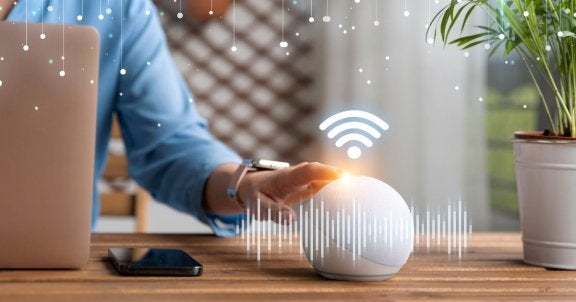Smart Home Basics: What is a Smart Home? How Do You Get One?

Smart homes are rapidly becoming the standard in the United States.
Consider the fact that the global smart home market is projected to reach 98.8 billion in 2024, with advances in IoT (Internet of Things) technology making it simple and easy to enjoy connectivity in the home —and beyond. So, what's all the hype about? The ability to control your appliances, thermostats, locks, lights, and more remotely is the new era of convenience. Let's talk about some of the major uses of Smart Home technology, and where you can get started:
1. Safety: Smart CO + Fire Alarm
According to the CDC, poisoning from colorless, odorless carbon monoxide is still a huge danger. In fact, more than 400 Americans die yearly from carbon monoxide poisoning and 20,000 people visit the emergency room as a result.
The Nest Protect Smoke + CO alarm is a perfect solution to the dangers of CO poisoning. It integrates seamlessly with your mobile device so that you can quickly silence an alarm that you know is not a problem. It eliminates human error by self-checking its own batteries constantly, so you will receive an alert if it's no longer at peak function. When you have a 4.9 out of 5-star rating out of more than 1,200 reviews, you know something's going right.
2. Energy Savings: Smart Thermostats
About half of the average American's annual household budget goes toward heating and cooling. According to Energy Star, that's about $900 a year. Some of that spending can be prevented by making sure that heating and cooling are controlled more intelligently. In fact, it's estimated that if everyone used a thermostat certified by Energy Star, Americans could save $740 million each year in heating and cooling costs.
And that's why the Nest Learning Thermostat, as the first thermostat to ever get Energy Star certified, is such a winner in energy savings. In fact, the Nest Thermostat can save an average of 10 to 12% on heating costs and 15% on cooling costs. This means that it can pay for itself in two years. Aside from the costs, it's also just a more convenient way of managing home temperatures. How does it work?
Basically, after using this smart thermostat for a week, it knows exactly what you prefer in a home temperature. From there, it programs itself to keep your house set at the temp you like. This means it starts warming up the house when you get up in the morning and knows to power down around when you go to sleep at night.
3. Stay Connected & Alert: Smart Doorbell
If you travel a lot, you may start to feel disconnected from your home. A Smart doorbell system can help you figure out who's at your home at any point, easily and effectively. It's also useful if you work at home or spend a lot of time there. This tech can help you decide whether you want to open the door for that salesman - or if you'd rather not.
Here's what the Nest Hello doorbell offers:
- 24/7 streaming and a three-hour snapshot history so you can see who's been at your house in the past few hours.
- HD video and clear images (no matter the time of day).
- Person and motion detectors that alert you when people are on your porch.
- Recognition of friends and family - you even get an alert when they show up!
- Wi-Fi connectivity so that you can easily see what's happening at your house from your mobile device.
4. Increased Security: The August Smart Lock
The days of hiding your keys under a suspiciously plastic-looking rock are done. Smart locks may sound complex, but they're actually very simple: August's DoorSense technology does all of the following:
- Using your smartphone, it automatically locks your door when you leave and unlocks it when you get back home.
- The lock itself offers advanced encryption technology to protect your home.
- Allows you to voice control your door so you can easily open for friends and family.
- Use WiFi to control your door from anywhere, so you don't have to leave keys hidden for friends and family who might stop by in your absence.
5. Security, Energy, and Convenience: Let there be (smart) light
The Phillips Hue Kits, available in white and in color, are the culmination of a few different smart home benefits: they conserve energy, offer increased security, and are incredibly convenient. Let's see how they check those boxes:
Security. Prefer to have a few lights on in the house for safety reasons? Turn your lights on from anywhere, so they'll be on when you get home. You can also set timers if you'll be leaving for a trip, so lights will come and go off at set times.
Energy. With the Phillips easy-to-control features, you can go to sleep knowing you're not wasting energy by leaving any lights on.
Convenience. No need to get out of bed. Compatible with Amazon Alexa, Apple HomeKit and Google Home, you can use your voice to turn lights on and off while in your home.
In addition to all that, the Phillips bulbs can be modulated to suit any mood or need during the day: utilizing bright white light for focus, dimmed light for relaxation, and cool light that mimics daylight to get you up in the morning.
Power Your Smart Home with Buckeye
Interested in the greatest security, convenience, and energy savings of a a smart home? Our team of Brainiacs is there to help you install your Nest technology so it works at peak efficiency.
Check us out online, or visit one of our Buckeye Broadband retail locations to see how Buckeye can protect and power your smart devices.
